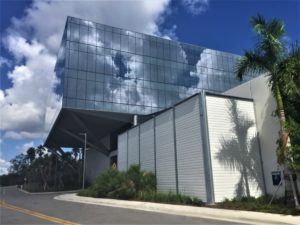Proven Technology
Noise barriers, or sound walls, have been used for generations as an effective tool to treat outdoor noise problems. Historically, sound walls were first used in large scale for roadways and highways. And these barriers were typically made of simple concrete. With increasing population densities and the advancement of acoustical technology, however, the use of barriers became more widespread for many different applications beyond highways. Barrier materials have also evolved past concrete, to include barriers that absorb & dissipate sound waves instead of simply blocking & reflecting them.
It’s Common Sense
“If you can see it, you can hear it!” This is a primary consideration when treating outdoor noise via noise barriers. Although there are other important considerations when designing a sound wall, at a minimum the barrier must completely block the full line-of-sight between the noise Source and the Receiver… PLUS some. A common rule of thumb to start the discussion of barrier dimensions is this: line-of-sight plus 30%. For example, if a barrier measuring 100 ft long and 10 feet tall blocked the line-of-sight, then you would start the discussion with barrier dimensions of 130 ft long x 13 feet tall.
Location, Location, Location!
In addition to the line-of-sight requirement, the second important rule-of-thumb relates to the location of the barrier in relation to the noise Source: “The closer to the Source, the better!” Obviously, air flow and maintenance access must be accounted for when deciding barrier placement. After those considerations are addressed, go as close as possible!
Sound-Absorption vs Sound-Reflection
There are two types of sound walls: sound-absorptive and sound-reflective. Sound-absorption is represented by NRC (Noise Reduction Coefficient), whereby an NRC of 0.0 is 100% reflective, and an NRC of 1.0 is 100% absorptive. Materials like concrete, wood, brick, etc are typically considered non-absorptive and have a minimal NRC rating. Conversely, products such as the
Choosing The Right Barrier for the Application
Every noise source has a unique sound frequency profile or signature. Some sources like HVAC equipment typically fall in the mid- to upper-frequency ranges. Other sources like rail noise may fall in the lower frequency ranges. While other sources may offput noise in a wide frequency spectrum. Likewise, noise barriers have unique frequency-specific performance capabilities. Some may perform best with mid-lower frequencies, while others shine in the upper frequency range. How well a barrier matches-up with a noise source, in terms of frequency-specific performance, is an important consideration when choosing a barrier. Poorly-matched barriers will provide less effective results.
Noise Requirement vs Good Neighbor
Some communities have Noise Ordinances that outline specific maximum noise levels within the community. Other times there is an application-specific mandate that restricts noise to specific levels. Considering that fines or other punitive measures against the noise offender can be significant, the use of legitimate engineered noise barriers is common in order to achieve the dBA target level.
Other times, however, there is no mandate or specific dBA target level per se. Companies just want to be a “good neighbor” and preemptively reduce noise emanating from their equipment or operations. While their motives for noise reduction may be different, the objectives are the same: get the most bang for the buck with the noise barrier you decide to use.
Thanks for this informative post. Suddenly I found this informative post about how noise barriers work. We are also dealing in the same niche in the Delhi NCR location. We are the best Noise barriers manufacturer in India. For more details please visit our web-page.